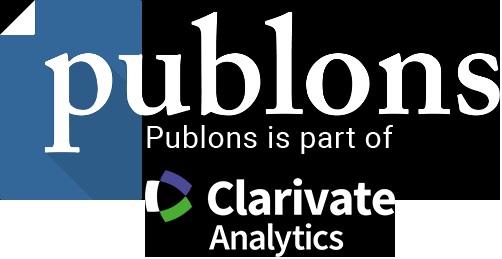CBDC, TRUST IN THE CENTRAL BANK AND THE PRIVACY PARADOX
DOI:
https://doi.org/10.2478/eoik-2024-0025Keywords:
central bank digital currency, digital money, anonymity of transactions, CBDC design, privacy paradoxAbstract
Privacy/anonymity of digital transactions is an issue that potentially may affect demand for central bank digital currency. Does discussions about privacy paradox related to CBDC? In this paper, basing on the respondent’s survey, we construct indexes of privacy preferences (in general, in digital and financial environment) to identify relations between stated preferences in different contexts and between choice toward anonymity vs functionality of CBDC, trust to central bank as CBDC issuer and its independence as a precondition to guaranty anonymity of transactions. We find that generally respondents demonstrate consequence of preferences in terms of, what we call, general privacy, privacy in digital and financial environment. Distribution of obtained 3 indexes demonstrates some differences. Probit model also demonstrates that relation between choice toward anonymity over functionality of CBDC and level of 3 indexes is modest. Where is no correspondence between choice toward anonymity over functionality and trust in central bank and its independence. However, respondents demonstrate high level of trust in central bank ability to guaranty anonymity of transactions and view independence as supporting it even opting functionality over anonymity. We reach a conclusion that some weak form of privacy paradox is exist, central banks, promoting CBDC, should stress on functionality of it. However, privacy should not be ignored. It is better to have it as “nice bonus” to functionality of CBDC.
References
Abramova, S., Böhme, R., Elsinger, H., Stix, H., and Summer, M. (2022). What can CBDC designers learn from asking potential users? Results from a survey of Austrian residents. Oesterreichische Nationalbank Working Paper 241. https://ideas.repec.org/p/onb/oenbwp/241.html
Acquisti A. (2004). Privacy in electronic commerce and the economics of immediate gratification. In: EC ’04 Proceedings of the 5th ACM Conference on Electronic Commerce, USA, 21-29. https://doi.org/10.1145/988772.988777
Acquisti A., Grossklags J. (2005). Privacy and rationality in individual decision making. IEEE Security & Privacy, 2, 24-30. https://doi.org/:10.1109/MSP.2005.22
Acquisti, A, Taylor, C., and Wagman, L. (2016). The economics of privacy. Journal of Economic Literature, 52(2), 442-492. http://dx.doi.org/10.2139/ssrn.2580411
Agur, I., A. Ari, and G. Dell’Ariccia (2022): Designing central bank digital currencies, Journal of Monetary Economics, 125, 62–79. https://doi.org/10.5089/9781513519883.001
Andolfatto, D. (2020). Assessing the Impact of Central Bank Digital Currency on Private Banks, The Economic Journal, 131, 525–540. https://doi.org/10.20955/wp.2018.026
Athey, S., Catalini, C. and Tucker, C. (2017). The digital privacy paradox: Small money, small costs, small talk. NBER Working Paper 23488. https://www.nber.org/system/files/working_papers/w23488/w23488.pdf
Bank of England (2020). Central Bank Digital Currency: Opportunities, Challenges, and Designs, Bank of England Discussion Paper. https://www.bankofengland.co.uk/paper/2020/central-bank-digital-currency-opportunitieschallenges-and-design-discussion-paper
Barnes S.(2006). A privacy paradox: Social networking in the United States. First Monday, 11(9). https://doi.org/10.5210/fm.v11i9.1394
Barth S., Menno D., de Jong T. (2017). The privacy paradox – Investigating discrepancies between expressed privacy concerns and actual online behavior – A systematic literature review. Telematics and Informatics. 34. рр. 1038-1058. https://doi.org/10.1016/j.tele.2017.04.013
Barth, S., De Jong, M.D.T., Junger, M., Hartel, P.H. and Roppelt, J.C. (2019). Putting the privacy paradox to the test: Online privacy and security behaviors among users with technical knowledge, privacy awareness, and financial resources. Telematic and Informatics, 41, 55-69. https://doi.org/10.1016/j.tele.2019.03.003
Bijlsma M., van der Cruijsen C., Jonker N., Reijerink J. (2021). What triggers consumer adoption of CBDC? De Nederlandsche Bank Working Paper 709. pp. 1-33. https://doi.org/10.2139/ssrn.3839477
Borgonovo E., Caselli S., Cillo A., Masciandaro D., Rabitti G. (2021). Money, Privacy, Anonymity: What Do Experiments Tell Us? Journal of Financial Stability. Vol. 56. https://doi.org/10.1016/j.jfs.2021.100934
Brits H., Jonker N. (2023). The Use of Financial Apps: Privacy Paradox or Privacy Calculus? De Nederlandsche Bank Working Paper No. 794. pp. 1-46. https://papers.ssrn.com/sol3/papers.cfm?abstract_id=4624569
Brooks S. (2021). Revisiting the Monetary Sovereignty Rationale for CBDCs. Bank of Canada Staff Discussion Paper. — 2021-17. pp. 1-29. https://doi.org/10.34989/sdp-2021-17
Brunnermeier M., James H., Landau J.P. (2019). The Digitalization of Money. NBER Working Paper №26300. Р. 1-32. http://dx.doi.org/10.3386/w26300
Brunnermeier M., Niepelt D. (2019). On the Equivalence of Private and Public Money. Journal of Monetary Economics. 106. pp. 27-41. https://doi.org/10.1016/j.jmoneco.2019.07.004
Chen, L., Huang, Y., Ouyang, S., and Xiong, W. (2021). The data privacy paradox and digital demand. NBER Working Paper 28854. https://www.nber.org/system/files/working_papers/w28854/w28854.pdf
Choi S., Kim B., Kim Y.-S., Kwon O. (2023). Central Bank Digital Currency and Privacy: A Randomized Survey Experiment. BIS Working Paper № 1147. рр. 1-61. http://dx.doi.org/10.2139/ssrn.4204110
Cloos J., Frank B., Kampenhuber L., Karam S., Luong N., Moller D., Monge-Larrain M., Tan Dat N., Nilgen M., Rossler Ch. (2019). Is Your Privacy for Sale? An Experiment on the Willingness to Reveal Sensitive Information. Games. 10, 28. pp. 2-15. https://doi.org/10.3390/g10030028
Cruijsen C. van der (2020). Payments data: do consumers want banks to keep them in a safe or turn them into gold? Applied Economics. 52(6), 609 – 622. https://doi.org/10.1080/00036846.2019.1659493
Culnan M., Armstrong P. (1999). Infromation privacy concerns, procedural fairness, and impersonal trust: An empirical investigation. Organizational Science. 10 (1), 340-347. https://doi.org/10.1287/orsc.10.1.104
ECB. Digital euro: Experimentation, scope and key learnings. Technical report, European Central Bank, April 2021(b). https://www.ecb.europa.eu/pub/pdf/other/ecb.digitaleuroscopekeylearnings202107~564d89045e.en.pdf
ECB. Eurosystem report on the public consultation on a digital euro. Consultation report, European Central Bank, April 2021(a). https://www.ecb.europa.eu/pub/pdf/other/Eurosystem_report_on_the_public_consultation_on_a_digital_euro~539fa8cd8d.en.pdf
Eichengreen B. (2022). The Trilemma of Central Bank Digital Currencies. Project Syndicate. November 9. https://www.project-syndicate.org/commentary/flawed-assumptions-driving-race-for-cbdcsby-barry-eichengreen-2022-11
European Central Bank (2019). Exploring Anonymity in Central Bank Digital Currencies. ECB. In Focus №4. 1-11. https://www.ecb.europa.eu/press/intro/publications/pdf/ecb.mipinfocus191217.da.pdf European Central Bank (2021). Eurosystem report on the public consultation on a digital euro. April 2021. https://www.ecb.europa.eu/pub/pdf/other/Eurosystem_report_on_the_public_consultation_on_a_digital_euro~539fa8cd8d.en.pdf
Fanti G. (2022). An Apparent Trilemma for Cross Border Central Bank Digital Currencies. Harward National Security Journal. Vol. 14, 75-86. https://harvardnsj.org/wp-content/uploads/2022/12/Fanti_14-Harv.-Natl-Sec.-J.-75-2022.pdf
Frost J. (2020). The economic forces driving fintech adoption across countries. BIS Working Paper № 838, 1-16. https://www.bis.org/publ/work838.htm
Garratt, R. J. and van Oordt, M. R. C. (2021). Privacy as a Public Good: A Case for Electronic Cash. Journal of Political Economy, 129 (7), 2157–2180. https://doi.org/10.1086/714133
Gerber N., Gerber P., Volkamer M. (2018). Explaining the privacy paradox: A systematic review of literature investigating privacy attitude and behavior. Computers and Security. 77. 226-261. https://doi.org/10.1016/j.cose.2018.04.002
Gimpel, H., Kleindienst, D. and Waldmann, D. (2018). The disclosure of private data: measuring the privacy paradox in digital services. Electronic Markets, 28, 475-490. https://doi.org/10.1007/s12525-018-0303-8
Goldfarb A., Que V. (2023). The Economics of Digital Privacy. Annual Review of Economics. 15, 267-86. https://doi.org/10.1146/annurev-economics-082322-014346
Hernandez de Cos P. (2023). The Digital Euro Project – A New Milestone. Speech by Mr Pablo Hernández de Cos, Governor of the Bank of Spain, at the Annual Convention of the Asociación de Mercados Financieros, Madrid, 20 November 2023. https://www.bis.org/review/r231121i.pdf
Hess T., Becker M., Klausinn S. (2019). Uncovering the Privacy Paradox: The Influence of Distraction on Data Disclosure Decisions. Conference: Proceedings of the 27th European Conference on Information Systems (ECIS 2019). At: Stockholm & Uppsala, Sweden, 1-14. https://salo.li/9B26ecf
Hirschprung R. (2023). Is the Privacy Paradox a Domain-Specific Phenomenon. Computers. 12. 156. 1-14. https://doi.org/10.3390/computers12080156
Jiang J. (2020). CBDC adoption and usage: some insights from field and laboratory experiments. Bank of Canda Staff Analytical Note, 12,1-12. https://doi.org/10.34989/san-2020-12
Kahn Ch., McAndrews J., Roberds W. (2005). Money is Privacy. International Economic Review. 46. (2), 377-399. https://doi.org/10.1111/j.1468-2354.2005.00323.x
Kantar Public. Study on new digital payment methods. Kantar Public - commissioned by the European Central Bank, 2022. https://www.ecb.europa.eu/euro/digital_euro/timeline/profuse/shared/pdf/ecb.dedocs220330_annex_summary.en.pdf
Kocherlakota, N. (1998). Money is Memory. Journal of Economic Theory, 81(2), 232-251. https://doi.org/10.1006/jeth.1997.2357
Kokolakis, S. (2017). Privacy attitudes and privacy behaviour: A review of current research on the privacy paradox phenomenon. Computer & Security, 64, 122-134. https://doi.org/10.1016/j.cose.2015.07.002
Koziuk V. (2021a). Confidence in digital money: Are central banks more trusted than age is matter? Investment Management and Financial Innovations, 18 (1), 12-32. https://doi.org/10.21511/imfi.18(1).2021.02
Koziuk V. (2021b). Willingness to adopt digital currency: whether central bank independence is important. Finance of Ukraine, 3, 7-22. https://doi.org/10.33763/finukr2021.03.007
Koziuk V. (2022). What do cross-country Bitcoin holdings tell us? Monetary and institutional discontent vs financial development, 19 (1), 168-185. https://doi.org/10.21511/imfi.19(1).2022.13
Koziuk V., Ivashuk Y. (2022). Does it Matter for CBDC Design? Privacy-Anonymity Preferences from the Side of Hierarchies and Egalitarian Cultural Patterns. ECONOMICS - Innovative and Economics Research Journal, 10 (1), 35-53. https://doi.org/10.2478/eoik-2022-0008
Mancini-Griffoli, T., Martinez Peria, M. S., Agur, I., Ari, A., Kiff, J., Popescu, A., &Rochon, C. (2018). Casting Light on Central Bank Digital Currency (IMF Staff Discussion Notes No. 18/08). https://doi.org/10.5089/9781484384572.006
Masciandaro D. (2018). Central Bank Digital Cash and Cryptocurrencies: Insights from Baumol-Friedman Demand for Money. Australia Economic Review. 51. pp. 1-11. https://doi.org/10.1111/1467-8462.12304
Norberg P., Horne D., Horne D. (2007). The privacy paradox: Personal information disclosure intentions versus behaviors. Journal of Consumer Affairs, 41(1), 100-126. https://doi.org/10.1111/j.1745-6606.2006.00070.x
Paneta F. (2023). The cost of not issuing a digital euro. CEPR-ECB Conference The macroeconomic implications of central bank digital currencies. Frankfurt am Main, 23 November 2023. https://www.ecb.europa.eu/press/conferences/shared/pdf/20231123_cepr_ecb/Panetta_speech.ga.pdf
Pfister Сh., de Seze N. (2023). Who Needs an e-Yuan?. SUERF Policy Brief No 716, 1-7. https://www.suerf.org/publications/suerf-policy-notes-and-briefs/who-needs-an-e-yuan/
Radukić S., Mastilo Z., Kostić Z. (2019) Effects of Digital Transformation and Network Externalities in the Telecommunication Markets. ECONOMICS - Innovative and Economics Research Journal, 7(2). https://doi.org/10.2478/eoik-2019-0019
Rosati P., Fox G., Cummins M., Lynn T. (2022). Perceived Risk as a Determinant of Propemsity to Adopt Account Information Servcies under the EU Payment Services Directive. Journal of Theoretical and Applied Electronic Commerce Research, 17, 493 – 506. https://doi.org/10.3390/jtaer17020026
Schomakers, E.-V., Lidynia, C., and Ziefle, M. (2019). A typology of online privacy personalities. Journal of Grid Computing, 17, 727-747. https://doi.org/10.1007/s10723-019-09500-3
Soderberg G., Kiff J., Tourpe H., Bechara M., Forte S., Kao K., Lannquist A., Sun T., Yoshinaga A. (2023). How Should Central Banks Explore Central Bank Digital Currency? FinTech Note 008, 1-43. http://surl.li/ulcah
Solove, D.J. (2021). The myth of the privacy paradox. George Washington Law Review, 89(1), 1-51. http://dx.doi.org/10.2139/ssrn.3536265
Syngjoo Choi, Bongseob Kim, Young-Sik Kim, Ohik Kwon. (2023). Central Bank Digital Currency and Privacy: A Randomized Survey Experiment. BIS Working Papers No 1147, 1-61. https://www.bis.org/publ/work1147.htm
Tsang Ch.-U., Yang A., Chen P.-K. (2023). Disciplining CBDC: Addressing the Privacy Aspects and Central Bank Independence. Northwestern Journal of International Law and Business, 43 (3), 235-289. https://papers.ssrn.com/sol3/papers.cfm?abstract_id=4253888
UK Parliament. (2023). Central Bank Digital Currency: Solution in Search of a Problem. House of Lord. Economic Affairs Committee. 3rd Report on Session 2021-2022. 52 p. https://publications.parliament.uk/pa/ld5802/ldselect/ldeconaf/131/13102.htm
Williamson, S. (2022). Central Bank Digital Currency: Welfare and Policy Implications. Journal of Political Economy, 130 (11), 2829-2861. https://doi.org/10.1086/720457
World Economic Forum (2021). Privacy and Confidentiality of Central Bank Digital Currency. White Paper. 1-21.
https://www3.weforum.org/docs/WEF_Privacy_and_Confidentiality_Options_for_CBDCs_2021.pdf
Downloads
Published
How to Cite
Issue
Section
License
Copyright (c) 2024 ECONOMICS - INNOVATIVE AND ECONOMICS RESEARCH JOURNAL

This work is licensed under a Creative Commons Attribution-NonCommercial-NoDerivatives 4.0 International License.























